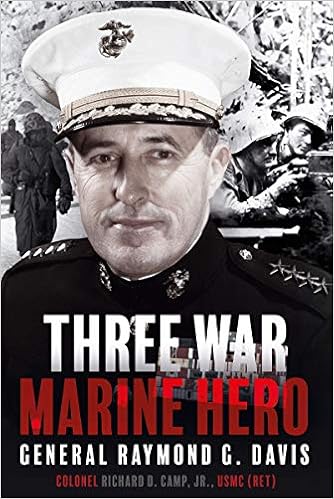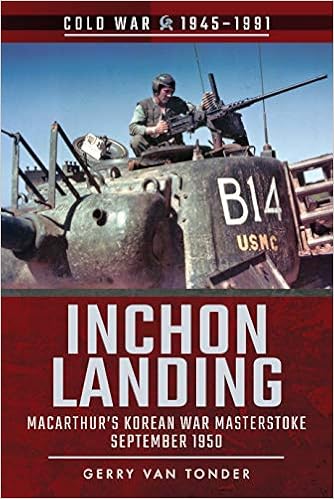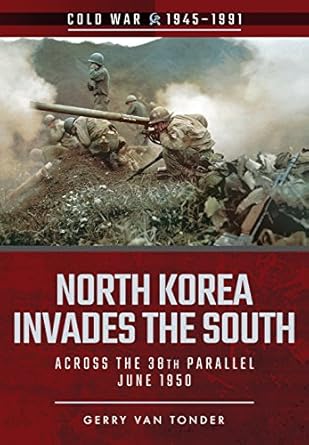Mission Command: A Look into The Korean War and The Battle of Chosin Reservoir
By MSG James F. Seifert Jr.
"Mission command is the Army's approach to command and control that empowers subordinate decision making and decentralized execution appropriate to the situation" (Department of the Army [DA], 2019, p. 1-3). Army doctrine publication (ADP) 6-0 states that mission command relies on critical and creative thinking from subordinates that seize the initiative to develop plans and concepts to accomplish the mission (DA, 2019). Additionally, the mission command process requires leaders who understand and assume the appropriate risk levels to operations, not risk-averse or risk-tolerant. The Battle of Chosin Reservoir highlights some positive and negative takeaways of mission command from both the Chinese and American sides. The battle also spotlights where mission command and other components of mission command did not occur, causing blind spots leading to the withdrawal of United Nations (UN) forces from northern Korea. The purpose of this paper is to examine the Battle of Chosin Reservoir and analyze the successes and failures United States (US) Army's approach to mission command principles, the elements of command and control (C2), and the C2 warfighting function.
Executive Leader Failures During the Korean War
By Jacob B. Dockery
The end of World War II led to a dramatic reduction of American military forces worldwide. While requirements to sustain soldiers in occupied countries existed, the offensive campaigns of World War II had ended, and America wanted its soldiers home. Post-World War II demobilization left the United States with a total of 590,000 soldiers, down from 1.9 million soldiers in 1946 (Longabaugh, 2014). Executive leaders continued to deliver poor strategic decisions in the Far East theater in hopes of preventing another conflict. False confidence in U.S. air superiority and nuclear deterrence led executive leaders to believe South Korea was safe from the North Korean invasion. As a result, force readiness deteriorated rapidly, and the South Korean Army and American forces with Task Force Smith were no match for the initial onslaught of North Korean and Chinese soldiers during the beginning of the Korean War.
1127 Days of Death – a Korean War Chronology – Part I, 1951
By Anthony J. Sobieski
The Korean War, forever known as the ‘Forgotten War’ by many, lasted a total of 1127 days, from June 25th 1950 through July 27th 1953. A total of 38 months. A little over three years in length, but encompassing four years on a calendar. With a beginning that was unlike any other beginning of a ‘war’ up until then, the term ‘Police Action’ became its moniker for many years, with some in the United States and other countries looking to call it anything other than what it really was. It was just too short a time after the end of World War II, with the sacrifices by many, the devastation of so much, burned into people’s memories all too readily. And during the war, who could have guessed there would be an ending that harkened back to the days of World War I, the war to end all wars. Trench warfare and bunkers, large amounts of artillery, and a set day and time to stop shooting. The Korean War was and is a difficult war to describe. quickly dissipated for those serving in Korea.
1127 Days of Death – a Korean War Chronology – Part II, 1951
By Anthony J. Sobieski
This is part II of a four-part chronology of those killed during the Korean War. When reading this article please keep in mind, as in Part I, that these numbers are only U.S. deaths during the war. UN and ROK deaths are not included as part of this series. There are two things that stand out for the year of 1951 in Korea. The vast majority of pilots and aircrew who were killed were ‘Remains Not Recovered’, be it due to being shot down behind enemy lines, over water, receiving a direct hit or not coming out of a dive and crashing and burning. The second is that by the end of 1951 as combat operations slowed down to a minimal crawl, Died of Other Causes, or ‘DOC’, became a significant factor in the tally of deaths, sometimes even accounting for more deaths in a day than combat operations. Vehicle roll-overs, accidents of various types, and hemorrhagic fever accounted for a large portion of these DOC deaths. As 1950 closed out and the New Year began, any hope of ‘being home by Christmas’ quickly dissipated for those serving in Korea.
Perceptions of Victory: Differing Views of Success by Nations and Echelons at the Chosin Reservoir
By Dale S. Marmion
The Korean War sprung from seeds sown well before the North Korean Peoples' Army surged across the 38th Parallel on 25 June 1950.[1] The roots of the conflict penetrate at least as deep as 1905, when the Japanese Army occupied Korea. Annexed in 1910, the Korean peninsula was considered enemy territory by then allies, China and the United States. In 1943 and 1945, President Roosevelt set the course for Korea to become free and independent following the end of World War II and until it was able to function on its own, China, the Soviet Union, and the United States would serve as joint trustees. Between the bombings of Hiroshima and Nagasaki, the Soviet Union opportunistically declared war on Japan joining the Allied Powers in the Pacific. [2] The surrender of Japan on 14 August 1943 made immediate delineation of zones necessary where each ally would receive the Japanese surrender. Two American Army Colonels, Dean Rusk and Charles Bonesteel, used a National Geographic map to propose a suitable line of demarcation. With no agreeable geographic boundaries, the line agreed upon between the Soviets and Americans was the 38th Parallel. [3] The Americans occupied south of the line as the Soviets descended from the north and sealed the border. Unfortunately, President Roosevelt's vision of a free and independent Korea was not to be.
The Role of the Forward Observer and Artillery during the Korean War
By Anthony J. Sobieski
To understand the role and importance that the artillery Forward Observer played during the Korean War, you must first understand a few basic facts and figures about the overall strategy and use of artillery during the war. With its rolling hills and valleys, high-peaked mountains, large irrigated farming areas, brutal winters and boiling summers, Korea presented all the worst for the U.S. to deal with in the United Nations' first effort dealing with the attempted expansion of communism. And, after it was all said and done, even after fifty-plus years of analyzing the conflict, Korea was, is, and will forever be known as 'The Artillery War'. Much has been written over the years about the infantry and Marines who served there, and of the battles they fought. No one is suggesting or attempting to take any credit away from their accomplishments, because when it comes down to it, the foot soldier was the one who re-took and defended what is now the country of the Republic of Korea, commonly referred to as South Korea.
A Hill Called White Horse: October 6, 1952 - October 15, 1952
By Anthony J. Sobieski
No other battle during 1952 in the Korean War could match the Battle for White Horse Mountain, otherwise known as Hill 395, either in voracity or intensity. This action goes largely unaccounted for in the annals of American military history from the Korean War. Why? Mainly because it was a battle between the Republic of Korea (ROK) Army and the CCF (Chinese Communist Forces). The extent of involvement by United Nations units was regulated to armor units, artillery battalions, and other support units. The defense of White Horse Mountain was in the hands of the commander of IX Corps, Lt. Gen. Reuben E. Jenkins. IX Corps was tipped off about an impending attack in the White Horse area when a Chinese Officer had surrendered to the ROKs in the area of Observation Post 'Roger', which was located on Hill 284, a small hill mass on the right of White Horse, and which overlooked a portion of the Chorwon Valley. The American artillery Forward Observer, 2nd Lt. Paul Braner of the 213th Field Artillery Battalion brought the prisoner to the attention of IX Corps after he discovered that the ROKs were torturing the prisoner not far from his bunker;
By MSG James F. Seifert Jr.
"Mission command is the Army's approach to command and control that empowers subordinate decision making and decentralized execution appropriate to the situation" (Department of the Army [DA], 2019, p. 1-3). Army doctrine publication (ADP) 6-0 states that mission command relies on critical and creative thinking from subordinates that seize the initiative to develop plans and concepts to accomplish the mission (DA, 2019). Additionally, the mission command process requires leaders who understand and assume the appropriate risk levels to operations, not risk-averse or risk-tolerant. The Battle of Chosin Reservoir highlights some positive and negative takeaways of mission command from both the Chinese and American sides. The battle also spotlights where mission command and other components of mission command did not occur, causing blind spots leading to the withdrawal of United Nations (UN) forces from northern Korea. The purpose of this paper is to examine the Battle of Chosin Reservoir and analyze the successes and failures United States (US) Army's approach to mission command principles, the elements of command and control (C2), and the C2 warfighting function.
Executive Leader Failures During the Korean War
By Jacob B. Dockery
The end of World War II led to a dramatic reduction of American military forces worldwide. While requirements to sustain soldiers in occupied countries existed, the offensive campaigns of World War II had ended, and America wanted its soldiers home. Post-World War II demobilization left the United States with a total of 590,000 soldiers, down from 1.9 million soldiers in 1946 (Longabaugh, 2014). Executive leaders continued to deliver poor strategic decisions in the Far East theater in hopes of preventing another conflict. False confidence in U.S. air superiority and nuclear deterrence led executive leaders to believe South Korea was safe from the North Korean invasion. As a result, force readiness deteriorated rapidly, and the South Korean Army and American forces with Task Force Smith were no match for the initial onslaught of North Korean and Chinese soldiers during the beginning of the Korean War.
1127 Days of Death – a Korean War Chronology – Part I, 1951
By Anthony J. Sobieski
The Korean War, forever known as the ‘Forgotten War’ by many, lasted a total of 1127 days, from June 25th 1950 through July 27th 1953. A total of 38 months. A little over three years in length, but encompassing four years on a calendar. With a beginning that was unlike any other beginning of a ‘war’ up until then, the term ‘Police Action’ became its moniker for many years, with some in the United States and other countries looking to call it anything other than what it really was. It was just too short a time after the end of World War II, with the sacrifices by many, the devastation of so much, burned into people’s memories all too readily. And during the war, who could have guessed there would be an ending that harkened back to the days of World War I, the war to end all wars. Trench warfare and bunkers, large amounts of artillery, and a set day and time to stop shooting. The Korean War was and is a difficult war to describe. quickly dissipated for those serving in Korea.
1127 Days of Death – a Korean War Chronology – Part II, 1951
By Anthony J. Sobieski
This is part II of a four-part chronology of those killed during the Korean War. When reading this article please keep in mind, as in Part I, that these numbers are only U.S. deaths during the war. UN and ROK deaths are not included as part of this series. There are two things that stand out for the year of 1951 in Korea. The vast majority of pilots and aircrew who were killed were ‘Remains Not Recovered’, be it due to being shot down behind enemy lines, over water, receiving a direct hit or not coming out of a dive and crashing and burning. The second is that by the end of 1951 as combat operations slowed down to a minimal crawl, Died of Other Causes, or ‘DOC’, became a significant factor in the tally of deaths, sometimes even accounting for more deaths in a day than combat operations. Vehicle roll-overs, accidents of various types, and hemorrhagic fever accounted for a large portion of these DOC deaths. As 1950 closed out and the New Year began, any hope of ‘being home by Christmas’ quickly dissipated for those serving in Korea.
Perceptions of Victory: Differing Views of Success by Nations and Echelons at the Chosin Reservoir
By Dale S. Marmion
The Korean War sprung from seeds sown well before the North Korean Peoples' Army surged across the 38th Parallel on 25 June 1950.[1] The roots of the conflict penetrate at least as deep as 1905, when the Japanese Army occupied Korea. Annexed in 1910, the Korean peninsula was considered enemy territory by then allies, China and the United States. In 1943 and 1945, President Roosevelt set the course for Korea to become free and independent following the end of World War II and until it was able to function on its own, China, the Soviet Union, and the United States would serve as joint trustees. Between the bombings of Hiroshima and Nagasaki, the Soviet Union opportunistically declared war on Japan joining the Allied Powers in the Pacific. [2] The surrender of Japan on 14 August 1943 made immediate delineation of zones necessary where each ally would receive the Japanese surrender. Two American Army Colonels, Dean Rusk and Charles Bonesteel, used a National Geographic map to propose a suitable line of demarcation. With no agreeable geographic boundaries, the line agreed upon between the Soviets and Americans was the 38th Parallel. [3] The Americans occupied south of the line as the Soviets descended from the north and sealed the border. Unfortunately, President Roosevelt's vision of a free and independent Korea was not to be.
The Role of the Forward Observer and Artillery during the Korean War
By Anthony J. Sobieski
To understand the role and importance that the artillery Forward Observer played during the Korean War, you must first understand a few basic facts and figures about the overall strategy and use of artillery during the war. With its rolling hills and valleys, high-peaked mountains, large irrigated farming areas, brutal winters and boiling summers, Korea presented all the worst for the U.S. to deal with in the United Nations' first effort dealing with the attempted expansion of communism. And, after it was all said and done, even after fifty-plus years of analyzing the conflict, Korea was, is, and will forever be known as 'The Artillery War'. Much has been written over the years about the infantry and Marines who served there, and of the battles they fought. No one is suggesting or attempting to take any credit away from their accomplishments, because when it comes down to it, the foot soldier was the one who re-took and defended what is now the country of the Republic of Korea, commonly referred to as South Korea.
A Hill Called White Horse: October 6, 1952 - October 15, 1952
By Anthony J. Sobieski
No other battle during 1952 in the Korean War could match the Battle for White Horse Mountain, otherwise known as Hill 395, either in voracity or intensity. This action goes largely unaccounted for in the annals of American military history from the Korean War. Why? Mainly because it was a battle between the Republic of Korea (ROK) Army and the CCF (Chinese Communist Forces). The extent of involvement by United Nations units was regulated to armor units, artillery battalions, and other support units. The defense of White Horse Mountain was in the hands of the commander of IX Corps, Lt. Gen. Reuben E. Jenkins. IX Corps was tipped off about an impending attack in the White Horse area when a Chinese Officer had surrendered to the ROKs in the area of Observation Post 'Roger', which was located on Hill 284, a small hill mass on the right of White Horse, and which overlooked a portion of the Chorwon Valley. The American artillery Forward Observer, 2nd Lt. Paul Braner of the 213th Field Artillery Battalion brought the prisoner to the attention of IX Corps after he discovered that the ROKs were torturing the prisoner not far from his bunker;





